After learning to make a black and white sketch in Part 1, the professional artist behind Fergus the Horse teaches you how to add color when drawing horses.
If you’ve been practicing, you may notice your drawing skill improving. Trying to make your drawings “perfect” will leave you frustrated.
Perfection is a monster. Excellence, however, is something to strive for. If you’re angry and wearing out your eraser and your paper, leave it and start a fresh drawing. Be patient and keep going until you have a pencil sketch you are pleased with.
Those of you who read my last article will note that on this sketch, there are some suggestions of dark areas—the underbelly and throat, for example—that give the horse some dimension.
1. Sketch (Pencil Drawing)
Once you’ve made a drawing you are relatively pleased with, let’s think about color. Color and light cannot be separated. They hold each other in place to create form.
We’ll keep it simple for this exercise and make our horse a chestnut, or sorrel, so the mane and tail are the same color as the body. No white markings, just a solid-colored horse.
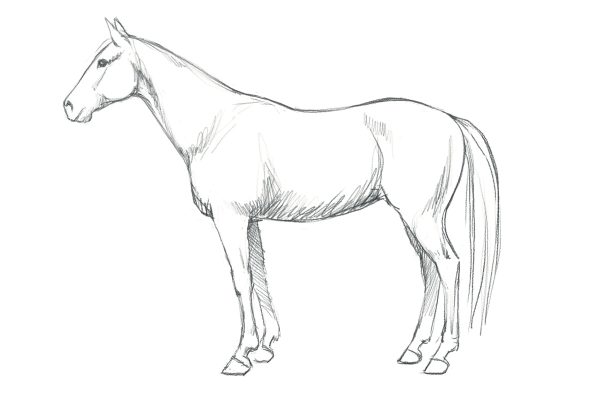
2. Chestnut
You need to know is where the light source is. Let’s say that in this drawing it’s in front of and above our horse.
There are going to be parts of the horse that shine in the sun; these are called “highlights,” and will be lighter than the sorrel color. There are other places on the horse’s body that the sunlight won’t reach, which are cast into shadow and appear darker than the sorrel color.
Whether you’re looking at real horses or photographs, teach yourself to look carefully and notice where the highlights and shadows are on the horse’s body.
If you’re working with water paints or colored pencils, you can use the white paper you are drawing on to create the highlights by putting less color there. Note how I have left some white space on the horse’s face, poll, shoulder, back and hips.
Raw sienna and burnt sienna are good colors to have in your palette. I’d also recommend keeping an extra piece of paper to mix and test your colors on before applying them to your drawing.
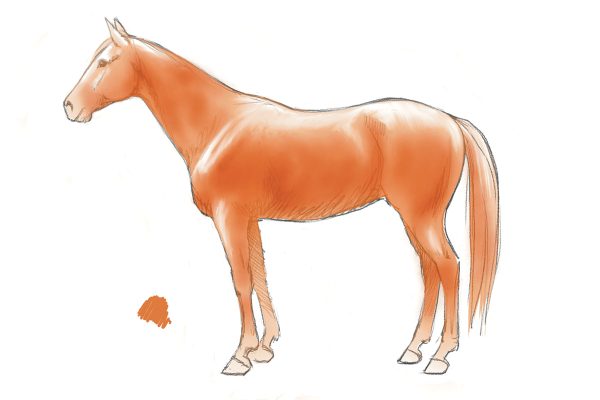
3. Dark Brown
Now let’s work on some shadows. I’ve laid out my darker brown for you to see. To get a dark brown with paints, try adding a tiny bit of deep blue or purple to your light brown. This kind of exploring will teach you a great deal!
“Put it where the sun don’t shine” is artist-speak for placing your shadows. You’ll see I’ve created shadow under our horse’s jaw, under the curve of her chest, her underbelly, inside her off-side legs, below her knees, hocks and fetlock joints, and on the underside of her tail.
NOTE: If you’re keen on drawing horses well, memorize their body parts. Words like withers, stifle, gaskin, poll, barrel, fetlock and cannon are just as important to an equestrian artist as they are to an equestrian athlete.
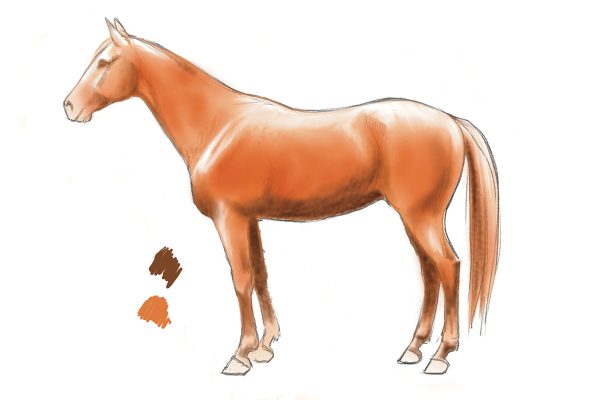
4. Blue/Purple
Now it gets interesting! We’re going to add some blue. I’ve chosen a deep purplish-blue.
I’ve also thinned some of the same blue, as one might do with water paints, and dragged it over the light brown just to see what happens.
When applied to our drawing, I’ve placed the blue thinly in areas where the light brown and dark brown meet. Look at her tail, barrel, neck and face. I’ve also put some blue on her muzzle.
As you know, our chestnut (or sorrel) horse will have black skin, so the muzzle will appear grayish where the hair is very thin. I’ve used the blue/purple on the hooves, too.
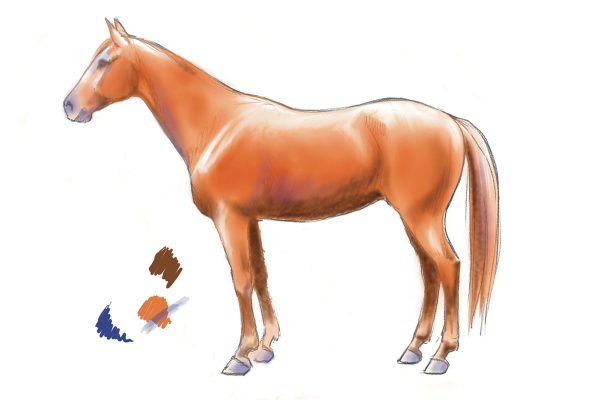
NOTE: Be very careful with black. If you’re working with paints, black can kill your painting very quickly! If you have a set of paints, ignore the black. Try using combinations of brown and deep blue and/or purple.
When painting with oils or watercolors, I often mix burnt sienna with cobalt blue. Explore. If you get it right, your colors will sing!
5. Final Touches
For the finishing touches, here is a very dark blue. It’s almost black, but not quite. See how I’ve made a series of strokes, graduating from light to dark? This is called “hatching,” and it’s a great way to create variations of intensity with pencils.
I’ve used it here to clarify our horse’s eye, nostril and mouth. I’ve gently outlined the ears to define them, darkened the underside of the chest, and added a little accent to the legs, hooves and tail.
Note also that I have added a reflective highlight in our horse’s eye. With thick paints or colored pencils, you can add some white to make that little spot. With water paints, you must remember to leave some white paper showing through.
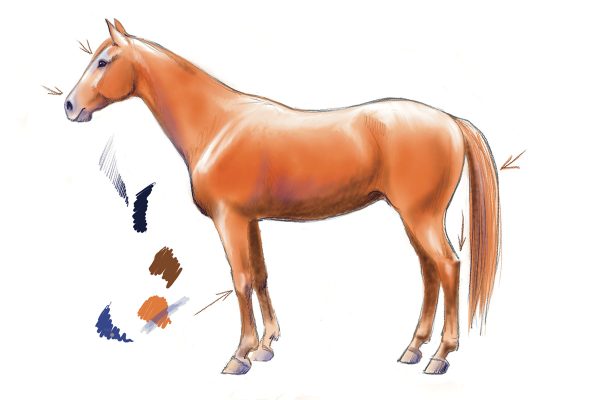
Making a colored drawing or painting of a horse is a journey in decision-making. Study photographs and the work of professional artists. Teach yourself to notice highlights and shadows. And remember, practice will never make you worse, it will only make you better.
6. Signature
Finally, tidy up, sign and date your artwork. Be proud of it. Keep going. When you look back at your drawings 10 years from now, you might be surprised by your progress!
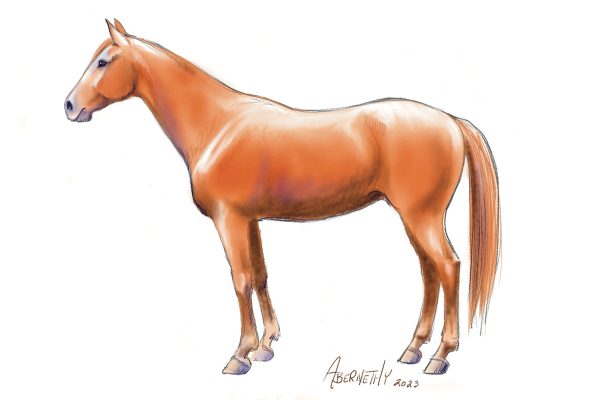
This article about how to add color when drawing horses appeared in the July/August 2023 issue of Young Rider magazine. Click here to subscribe!


